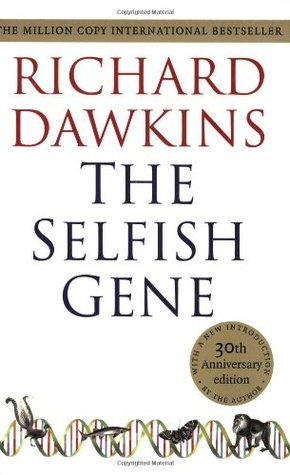
Estimated read time: 7 min read
One Sentence Summary
"The Selfish Gene" explores the concept of genes as the driving force behind evolution and the behaviors of living organisms.
Table of Contents
Introduction
"The Selfish Gene" by Richard Dawkins is a groundbreaking book that explores the role of genes in evolution and the concept of natural selection. First published in 1976, this influential work challenges the traditional view of evolution by emphasizing the gene as the fundamental unit of selection. Dawkins argues that genes, rather than individuals or species, are the driving force behind the evolutionary process. This summary will provide an overview of the book's key themes, main events, and insights.
Brief Synopsis
"The Selfish Gene" presents a comprehensive explanation of how genes shape the behavior and traits of living organisms. Dawkins introduces the concept of "selfishness" in the context of genes, asserting that they act in their own self-interest to ensure their own survival and reproduction. The book also delves into the idea of "replicators," which are entities capable of making copies of themselves. Through a series of thought-provoking examples and analogies, Dawkins elucidates the powerful influence of genes on the natural world.
Plot Overview and Setting
The book is structured as a series of interconnected chapters that explore various aspects of evolutionary biology. Dawkins employs a clear and accessible writing style, making complex scientific concepts understandable to a wide audience. The setting of the book encompasses the entire natural world, from the microscopic level of DNA to the macroscopic scale of ecosystems. Through engaging storytelling and scientific analysis, Dawkins illustrates the pervasive impact of genes on all living organisms.
Main Characters
| Character | Description |
|---|---|
| Genes | Fundamental units of heredity that carry genetic information and influence the traits of organisms. |
| Organisms | Living beings that serve as vehicles for the replication and transmission of genes. |
| Species | Groups of interbreeding individuals that share common genetic characteristics. |
| Replicators | Entities capable of producing copies of themselves, such as genes and cultural artifacts. |
Summary of Different Story Points Over Chapters
Chapter 1: Why Are People?
Dawkins introduces the concept of "selfish genes" and explains how they drive the evolutionary process. He argues that genes are the key to understanding the behavior and traits of living organisms.
Chapter 2: The Replicators
Dawkins elaborates on the concept of replicators and their role in the perpetuation of genetic information. He distinguishes between replicators and vehicles, emphasizing the centrality of genes in evolution.
Chapter 3: Immortal Coils
The chapter delves into the nature of genes and their ability to persist across generations. Dawkins discusses the concept of "survival machines" and how genes use organisms as vehicles for their replication.
Chapter 4: The Gene Machine
Dawkins explores the relationship between genes and organisms, highlighting the ways in which genes influence the behavior and characteristics of their host organisms.
Chapter 5: Aggression: Stability and the Selfish Machine
Dawkins examines the role of aggression and cooperation in the context of evolutionary stability. He discusses the evolutionary strategies employed by genes to ensure their survival and propagation.
Chapter 6: Genesmanship
The chapter delves into the concept of "genetic conflict" and the strategies employed by genes to outcompete others. Dawkins elucidates the concept of "selfish DNA" and its implications for evolutionary dynamics.
Chapter 7: Family Planning
Dawkins explores the evolutionary significance of family relationships and the ways in which genes influence parental behavior. He discusses the concept of inclusive fitness and the role of kin selection in the perpetuation of genes.
Chapter 8: Battle of the Sexes
The chapter examines the evolutionary dynamics of sexual reproduction and the genetic conflicts that arise between males and females. Dawkins discusses the concept of "parental investment" and its implications for reproductive strategies.
Chapter 9: Battle of the Generations
Dawkins explores the intergenerational conflicts that arise from differing reproductive interests. He discusses the concept of "parent-offspring conflict" and its impact on the evolutionary process.
Chapter 10: You Scratch My Back, I'll Ride on Yours
The chapter delves into the concept of mutualism and cooperation in the context of evolutionary biology. Dawkins discusses the evolutionary origins of altruism and the ways in which cooperative behavior can be favored by natural selection.
Chapter 11: Memes: The New Replicators
Dawkins introduces the concept of "memes" as cultural replicators that undergo a process analogous to biological evolution. He discusses the spread and adaptation of memes within human societies and their impact on human behavior.
Chapter 12: Nice Guys Finish First
Dawkins explores the evolution of social behavior and the role of cooperation in shaping human societies. He discusses the concept of "reciprocal altruism" and its significance in fostering cooperative relationships.
Main Events
The book does not follow a traditional narrative structure with specific main events. Instead, it presents a series of interconnected ideas and examples that illustrate the central themes of gene-centered evolution, selfishness, and natural selection. The main events are the exploration of various evolutionary concepts and their implications for understanding the behavior and traits of living organisms.
Themes and Insights
Gene-Centered Evolution
Dawkins challenges the traditional view of evolution by emphasizing the gene as the primary unit of selection. He argues that genes act in their own self-interest, driving the evolutionary process and shaping the behavior and traits of organisms.
Selfishness and Altruism
The book explores the concepts of selfishness and altruism in the context of natural selection. Dawkins elucidates how genes can influence behavior to promote their own survival and reproduction, as well as the evolutionary origins of cooperative and altruistic behavior.
Replicators and Vehicles
Dawkins introduces the concept of replicators and vehicles, highlighting the distinction between genetic information and the organisms that carry it. He emphasizes the role of genes as replicators and organisms as vehicles in the transmission of genetic information.
Cultural Evolution
In addition to biological evolution, Dawkins discusses the concept of memes as cultural replicators. He explores the spread and adaptation of memes within human societies, drawing parallels between cultural and biological evolution.
Reader's Takeaway
"The Selfish Gene" offers readers a thought-provoking and paradigm-shifting perspective on evolution and the role of genes in shaping the natural world. By challenging traditional views of altruism, cooperation, and evolution, Dawkins provides a compelling framework for understanding the pervasive influence of genes on all living organisms. Readers will come away with a deeper appreciation for the gene-centered nature of evolution and its implications for the behavior and traits of living beings.
Conclusion
"The Selfish Gene" by Richard Dawkins is a seminal work that revolutionized the field of evolutionary biology. Through engaging storytelling and incisive analysis, Dawkins presents a compelling argument for the gene-centered view of evolution, challenging conventional wisdom and offering profound insights into the workings of the natural world. This book is essential reading for anyone interested in understanding the fundamental forces that shape life on Earth.
The Selfish Gene FAQ
What is 'The Selfish Gene' about?
Who is the author of 'The Selfish Gene'?
What are some key themes in 'The Selfish Gene'?
Is 'The Selfish Gene' suitable for readers without a scientific background?
What impact has 'The Selfish Gene' had on the field of biology?




